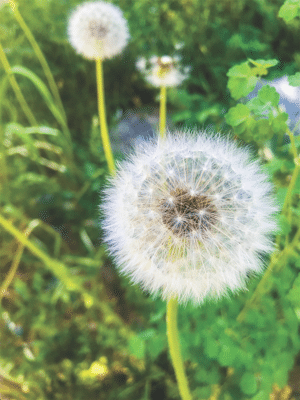I visited recently with a homeowner about some trees in her yard that were dying. At a site visit, I looked for insects and disease presence and found nothing obvious. I asked if they sprayed for broadleaf weeds and only an occasional spot spray for dandelions was used. There were no symptoms of nutrient deficiency. The thornless honeylocust that was dying is typically hardy and problem-free. I left the home without a plausible reason for sickness in the trees. Researching potential problems with honeylocust with the symptoms hinted toward an insect issue, but this didn’t seem to fit. I was stumped.
It wasn’t until the next day that it dawned on me to ask the homeowner if they had used any “weed and feed” type products on their lawn. When they answered yes I went back to the home to look at the ingredients in the bag. Sure enough, there were three broadleaf weed herbicides listed on the bag label. As we walked around the yard, unnoticed damage to other plants was observed. We concluded that the “weed and feed” had delivered an immaculately weed-free lawn but that there was collateral damage to surrounding broadleaf plants, including the sick honeylocust trees.
Because “weed and feed” products typically come as granules they are often thought of more for their fertilizing benefits and the weed control is “just an added bonus.” We forget the “weed” part of the bag contains an herbicide.
There are various products available to fertilize and provide weed control in one application. These are very useful tools that enable us to control many problem lawn weeds and avoid later spray applications. Weed control needs all the tools in the box and “weed and feed” products are great if you use them according to label instructions. The homeowner’s product contained a warning against applying within the drip line of trees but it wasn’t an obvious caution. More like it was hidden within all the blah blah blah we tend to ignore when looking for the “how much to apply” instructions.
If you’ve used any “weed and feed” type products, look around your yard for broadleaf plants with curling/cupped leaves and/or yellowish and twisted growth. These are typical symptoms of many growth-regulating broadleaf herbicides. Some plants are more susceptible than others. Some roots stretch further from the parent plant. There may be two plants side by side with one showing herbicide damage and the other appearing fine. In the future, be cautious with “weed and feed” products. Follow the WHOLE label instructions. Your lawn will thank you and other nearby vegetation won’t experience collateral damage.
Credit: www.hjnews.com

